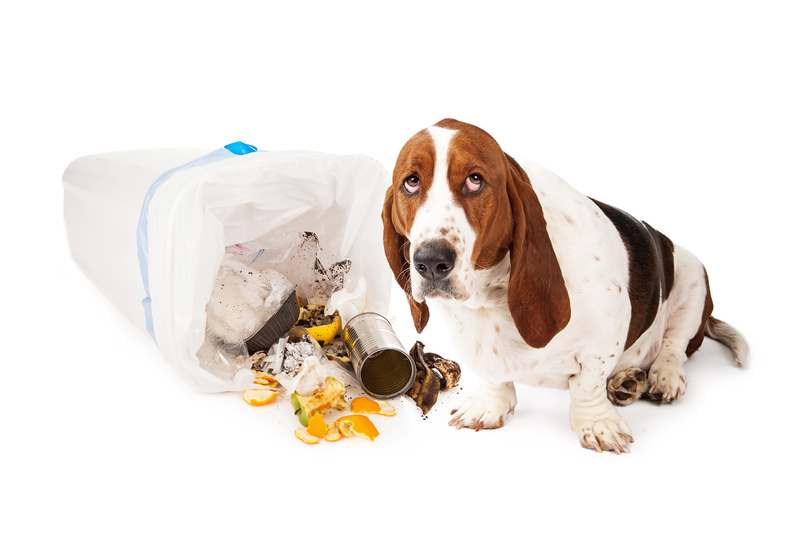Effortless Ways to Dispose of Old Plant Pots
Is your shed bursting with old plant pots you no longer use? It's a common dilemma for gardening enthusiasts--what to do with those stacks of plastic, clay, or ceramic containers that pile up each season. Properly disposing of unwanted pots is crucial for the environment and can even benefit your local community. This detailed guide explores easy, environmentally friendly, and creative solutions for getting rid of your surplus flowerpots. Whether you prefer recycling, donating, or transforming them into something new, these simple methods ensure your garden clutter is cleared--sustainably.
Why Responsible Plant Pot Disposal Matters
Before tossing containers in the trash, consider the environmental impact. Discarded plant pots, especially those made from plastic, can take centuries to break down in landfills. On the other hand, recycling or repurposing old pots helps conserve resources, prevents pollution, and even supports local gardening projects. Taking a few extra moments to dispose of them thoughtfully makes a difference!

Effortless Ways to Get Rid of Old Plant Pots
1. Recycle Your Plastic Pots Properly
Many garden containers are made from recyclable materials, especially plastics like polypropylene (#5) or high-density polyethylene (#2). Follow these steps for easy recycling:
- Rinse Thoroughly: Remove all soil, plant debris, and fertilizer residues. Clean pots are more likely to be accepted by recycling facilities.
- Check Local Guidelines: Not all municipal curbside recycling programs accept plant pots due to their shape or material. Contact your local recycling center or check the guidelines online.
- Use Garden Center Programs: Many large garden stores and nurseries offer plant pot recycling. Look for designated bins or ask staff about their take-back schemes.
- Separate by Material: Remove plastic labels, metal wires, or mixed components to help the recycling process.
- Tip: Stack pots of the same type together for convenient drop-off.
Pro tip: Save time by rinsing pots immediately after use--soil is much harder to remove once dried out!
2. Donate Old Flowerpots to Community Projects
If your used pots are still in good shape, donate them. Many organizations welcome second-hand containers:
- Community Gardens: Local allotments and urban farms often need extra pots for seedlings.
- Schools and Nurseries: Educational gardening programs appreciate donations for projects.
- Nonprofit Organizations: Contact animal shelters or rehab centers (for enrichment or plantings), or community centers with garden spaces.
- Local Libraries or Municipalities: Some hold spring plant swaps or gardening workshops and collect containers seasonally.
- How to Donate: Wash and dry pots thoroughly, group in manageable bundles, and call ahead to confirm acceptance.
Donating not only reduces waste but also benefits your neighbors--a win-win solution!
3. Repurpose Old Plant Pots for Creative Projects
With a little imagination, garden pots can be transformed into practical or decorative items. Try these DIY ideas for upcycling:
- Organizers: Use small plastic pots for sorting hardware, tools, or craft supplies in your shed or garage.
- Bird Baths or Feeders: Stack larger pots upside-down and top with saucers to make simple wildlife stations.
- Planter Towers: Create a cascading vertical garden by threading pots onto a sturdy dowel or rod.
- Decorative Lanterns: Paint terra cotta pots and add candles or fairy lights for patio ambiance.
- Mini Compost Bins: Use slightly cracked containers for composting kitchen scraps in a small space.
Even broken or chipped pots may have a place in your landscape--as drainage shards for larger planters or rustic edging for flower beds.
4. Reuse Plant Containers for Starting Seeds or Cuttings
A common, yet often overlooked, way to dispose of old nursery pots is by reusing them for early plantings. Smaller pots are ideal for:
- Seed Starting: Fill cleaned containers with fresh potting mix for spring seedlings.
- Propagation: Root cuttings or divide houseplants into second-hand pots for gifting or sharing.
- Gift Giving: Decorate and use old pots as unique vessels for homemade plant gifts.
Just sterilize containers by soaking in a 10% bleach solution, rinse thoroughly, and they're ready for another season!
5. Responsible Landfill Disposal of Non-Recyclable Pots
Not every pot can be reused or recycled. Ceramic and terracotta containers are rarely accepted for recycling due to their glazing or composition. If damaged, consider:
- Breaking Up for Drainage: Shattered terracotta can line the bottom of new planters, improving drainage and root health.
- Stepping Stones or Pathways: Embed broken ceramic pieces in concrete for decorative garden paths.
- Safe Disposal: Wrap shards securely in newspaper or a box before placing in the trash to prevent injuries during waste collection.
Always avoid burning plastic containers--doing so releases harmful toxins. When in doubt, consult your local waste management for the safest disposal method.
What to Do with Large or Unusual Plant Pots
Have oversized planters or oddly shaped containers? These tips help you dispose of large plant pots with minimal effort:
- Online Marketplaces: List free or for-sale pots on platforms like Facebook Marketplace, Craigslist, or neighborhood apps. Gardeners are often happy to salvage large containers!
- Yard Sales: Include unusual or decorative pots in garage or car boot sales. You might be surprised at their appeal.
- Scrap Yards: Metal or concrete pots may have value at scrap facilities; contact local sites for guidance.
Encourage reuse by describing the pot's size, condition, and potential uses in your listing--creativity makes them more attractive to new owners.
FAQs About Effortless Plant Pot Disposal
Can you recycle all types of old plant pots?
Not always. Most recycling centers only accept certain plastics. Ceramic, clay, or glass pots are rarely recyclable due to glazes or composite materials. Always check your local guidelines to avoid contamination.
Where can I drop off old flowerpots for recycling?
- Garden Centers and Nurseries: Many offer seasonal collection bins.
- Recycling Events: Municipalities may host spring cleanups or special drop-off days.
- Community Compost Sites: Some accept plastic pots for plant swaps or reuse projects.
What is the best way to clean old pots before recycling or donating?
Remove all soil, roots, and debris. Scrub with water and a mild detergent; for stubborn residues, soak in a 10% bleach solution for 10-15 minutes, then rinse and dry. This prevents plant diseases from spreading and ensures acceptance.
Are there any incentives for recycling garden containers?
Occasionally, large garden centers or municipalities offer loyalty points, discounts, or raffle entries for recycling pots. Check with retailers during peak gardening season for special programs or incentives.

Best Practices for Sustainable Plant Pot Disposal
- Buy Less, Choose Wisely: Whenever possible, select pots made from biodegradable, recycled, or easily recyclable materials.
- Look for Returnable Containers: Some nurseries use "deposit" pots that can be returned for re-use--support these programs.
- Avoid Single-Use Plastics: Opt for more durable or compostable options.
- Share with Friends or Neighbors: Host a plant pot swap day in your community.
Sustainable gardening doesn't end with the plants themselves--responsible container stewardship is part of the process!
Summary: Simplifying Old Plant Pot Disposal
Getting rid of old plant pots is easier and more environmentally friendly than ever. Whether you choose to recycle, donate, repurpose, or safely dispose of your pots, every action helps reduce landfill waste and supports a healthy, green community. Remember:
- Clean pots before donating or recycling
- Check with local centers for specific guidelines
- Explore creative DIY solutions
- Never burn or illegally dump plant containers
By adopting these effortless ways to dispose of old plant pots, you'll refresh your space and contribute to a greener world--one container at a time!